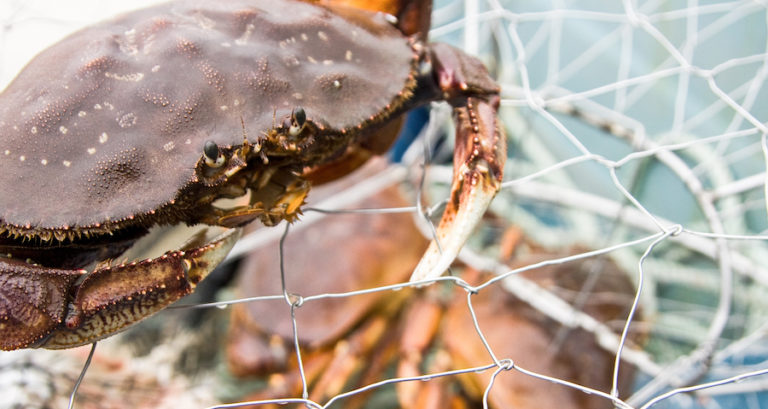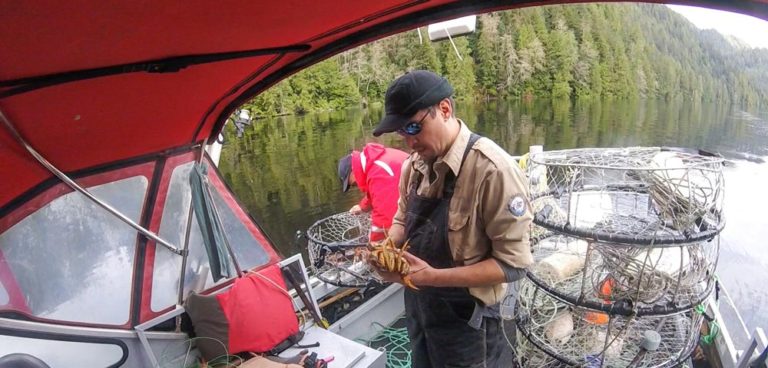Rockfish research linked to indigenous rights

Fifty years ago Charlie Mason could hop in a boat, travel a short distance from his home in Klemtu, catch enough rockfish for a meal or two, and then head back to town. “Today it is not that easy,” he says. “Sometimes I have to go to four or five spots before I catch anything.” Charlie is concerned that the increase in recreational and commercial fishing over the past 50 years is putting too much pressure on central coast rockfish. These concerns are widespread among our Nations’ fishers.
In response, CCIRA launched a rockfish research project in 2013. The strength of the project lies in its reliance on science and traditional knowledge. CCIRA has now published a study that explores the state of rockfish in our territories, while making connections between rockfish conservation and our indigenous rights.
Rockfish and our Indigenous rights
For our Nations, resources like rockfish are not only a source of food – they are cultural sustenance. “The loss of traditional resources has a long history of affecting the physical, mental and spiritual well-being of indigenous people throughout the world,” writes CCIRA’s Science Coordinator, Alejandro Frid, in his paper from the study.
The loss of traditional resources has a long history of affecting the physical, mental and spiritual well-being of indigenous people throughout the world.” Alejandro Frid, CCIRA Science Coordinator
Although Canada’s constitution grants indigenous people priority access to fisheries for Food, Social and Ceremonial (FSC) purposes, increasing pressure from commercial and recreational fisheries has a very real impact on our FSC harvests. Our rockfish research is providing new information that will help manage fisheries more sustainably while nourishing our cultures well into the future.
The study
Alejandro led the study, with numerous community members dedicating themselves to the necessary fieldwork. The traditional knowledge of elder fishers was essential for identifying study sites and providing historical context.
The study sampled 282 fishing sites using hook and line, and the catch from local FSC fishers. Researchers recorded the size, age and abundance of rockfish inside and outside Rockfish Conservation Areas (RCA’s) while recording the proximity of fishing sites to fishing lodges and ports.

Rockfish are long-lived species (some can live up to 120 years) and take many years to mature, with bigger and older fish producing the most offspring. However, fisheries tend to target these big old fish. This makes rockfish particularly vulnerable to overfishing.
“In working with Alejandro I’ve realized how long it takes for the fish to become big and how old they can get,” says Charlie. “Once you clean out all the big females from an area it is really hard for them to come back and multiply.”
Results
Results revealed that large and old Quillback and Yelloweye rockfishes were rare across the study area. These findings are consistent with our elders’ experience, and suggest that these species – which are of particular cultural significance to central coast Nations – are likely being overfished within our territories.
“…CCIRA launched a rockfish research project in 2013. The strength of the project lies in its reliance on science and traditional knowledge.”
However, results also showed that Yelloweye Rockfish (known locally as red snapper) were larger within Rockfish Conservation Areas (RCA’s), where recreational and commercial fishing is restricted. This discovery illustrates that RCA’s may be an effective conservation tool for this species.
However, the positive impact of RCA’s was not true for all rockfish species.
Alejandro speculates that this may mean the protection RCA’s offer is most beneficial to highly valued species like Yelloweye that receive a lot of fishing pressure. But it may also indicate that habitat within some RCA’s does not meet the requirements of some rockfish. Additional habitat studies may provide insights for maximizing the benefit of RCA’s for multiple species, such as adjusting the current boundaries.
Lastly, researchers found that long-lived rockfish species, like Quillback and Yelloweye, were bigger and more abundant at fishing sites that were farther away from fishing lodges and other ports. This finding likely reflects the impact that recreational fishers can have on accessible rockfish populations.

Want to know more about our rockfish research?
Please read the summary of results from Alejandro Frid’s recent paper. You can also find more about our Nations’ rockfish research in this previous blog post and in Issue 3 and Issue 5 of our online newsletter archive.






